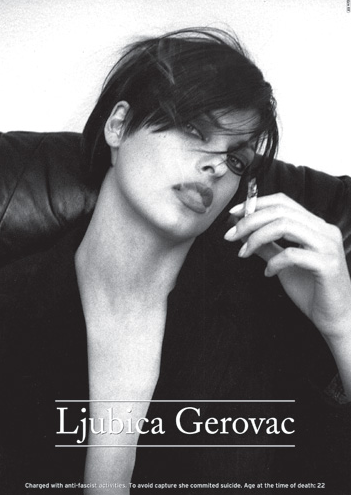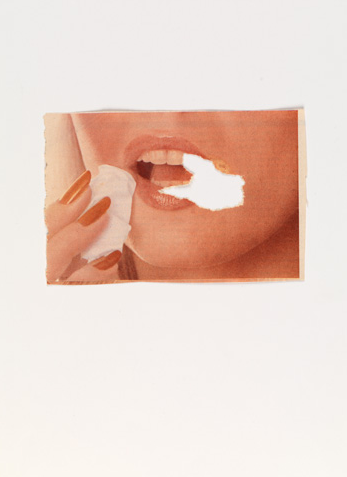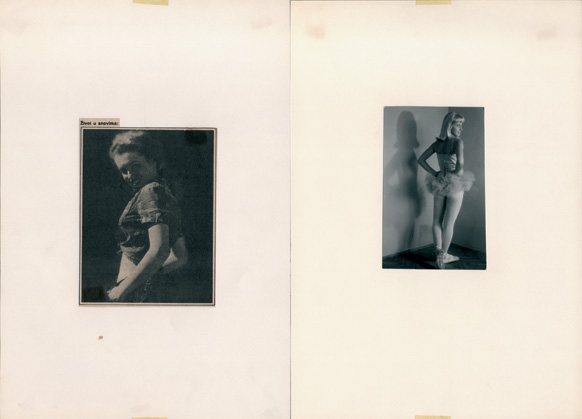Retrospetiva sobre Sanja Ivekovic: SWEET VIOLENCE
- Destino Imagem

- 24 de mar. de 2021
- 3 min de leitura
A partir da sua exposição no MoMa > 26.03.2012
Foi a primeira exposição de Sanja Iveković (n. 1949, Zagreb) num museu americano. Cobre quatro décadas da carreira da artista. Iveković é feminista convicta, ativista e pioneira na utilização do vídeo. Atingiu a maioridade nos anos sessenta, do século XX, o que coincidiu com o início de um movimento artístico que vem estabelecer uma nova praxis, em oposição ao mainstream institucional vigente. Fez parte dessa geração intitulada – Nova Umjetnička Praksa (nova prática artística) – criando e produzindo obras conceptuais, fotomontagens, vídeos e performances. Esta exposição reuniu vários trabalhos emblemáticos da artista, desde vídeos e instalações dos anos setenta, oitenta, noventa, e da primeira década do século XXI. A partir dos anos noventa, com a queda do muro de Berlim, a desintegração da Jugoslávia e o nascimento de um novo país, Iveković dedicou-se à análise da transformação social e política do socialismo para um outro sistema político. A artista oferece-nos uma visão fascinante sobre o poder, as questões de género e os paradoxos sociais. Uma viagem pela memória coletiva de um povo e de uma região que sofreu alterações sociais profundas nas últimas décadas.
Sweet Violence. 1974. Video (black-and-white, sound), 5:56 min
Sweet Violence, the work that gives this exhibition its title, was among Sanja Iveković’s first forays into video. It presents one of the artist's recurring themes: the corrosive effect of media culture under the state doctrine known as the Third Way, a political experiment that took place in Yugoslavia in the 1970s, defined by an idiosyncratic mix of socialism and free-market economics, all steeped in propaganda. In order to create a distancing effect, and thus make obvious the contrivances and fictive qualities of media reality, Iveković superimposed black bars on a television monitor and then taped one of the daily broadcasts of Zagreb’s Ekonomsko Propagandni Program (economic propaganda program). With this simple intervention she visually disconnects viewers from the "sweet violence" of media seduction so that they may examine the power of images, the way they circulate in everyday life, the stories they purport to tell, and, by extension, the mythologies that lurk beneath their surfaces.
Gen XX. 1997–2001
Na série Gen XX, Sanja Iveković apropriou-se de anúncios de revista de moda, com fotografias de modelos profissionais, substituindo os logos e marcas anunciadas pelas acusações e datas de execução de jovens militantes anti-fascistas mas, mantendo as fotos das modelos. Dragica Cončar, Nada Dimić, Ljubica Gerovac, as irmãs Balković, Anka Butorac e Nera Šafarič foram presas, torturadas e executadas pelo regime croata, durante a II Guerra Mundial. Numa das legendas lê-se: “Nada Dimić: Charged with anti-fascist activities. Tortured and executed in Nova Gradiška in 1942. Age at the time of execution: 19."

Sanja IvekovićInstrukcije br. 1 (Instructions No. 1) 1976
"In this work, Iveković stares into the video camera and uses its lens as a mirror as she methodically draws arrows in black ink on her face and neck. Negating the everyday ritual of applying makeup, the artist mocks the “how-to” language of advertising with stoic intensity, evoking instead the application of war paint. When she attempts to rub the ink away-or massage it into her skin-it leaves behind a smeared, grimy residue. The work is both a comment on the unrealistic standards of feminine beauty enforced by mass media and a protest against the systematic implementation of gender codes in consumer society."

Sanja Iveković Personal Cuts, 1982
"In Personal Cuts, which aired on prime-time Yugoslavian national television in 1982, Iveković counters the official history of socialism. Newsreel images—mass rallies, monuments, and a public address by Yugoslav President Tito—alternate with footage of the artist cutting holes into a sheer black stocking pulled over her face, like the DIY version of a militant’s balaclava. For Iveković, the repeated act of cutting into fabric is emblematic of film- and video-editing strategies such as montage. Revealing the insidiousness of national propaganda and questioning the unified stories told through official channels, she frames historical events as inextricably linked to human ones, ending the video with her face fully uncovered."
Outras obras:
1. Paper Women. 1976–77
2. Women’s House (Sunglasses). 2002–present.
3. Tragedy of a Venus. 1975–76.
4. Double Life. 1975–76
5. MOTHER AND CHILD, 1981-1982
Mais informação no site interativo da exposição.


























Comentários